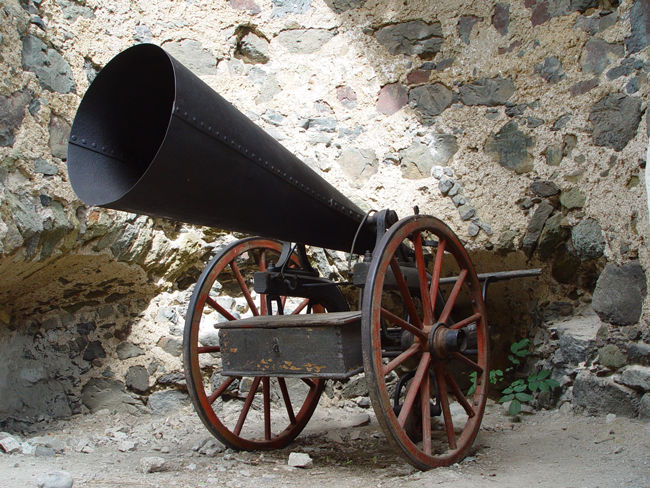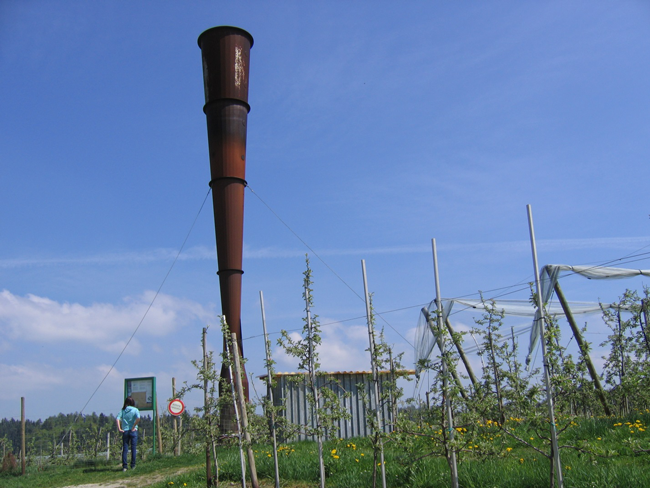Hailstorms can be highly localized and last for just minutes, but as farmers are well aware, they can do a lot of damage in a short time. They affect various crops differently, and the extent of damage often depends on their stage of growth. It is no surprise that farmers, concerned about the cost of crop insurance, are keen to find other ways of dealing with the problem. For soft crops like fruit, which is easily damaged by relatively small-sized hail, farmers can take a passive approach by rigging nets to prevent hail impact. A more aggressive strategy is to attack the problem at its roots by trying to prevent hail from forming in the first place.
In an earlier blog post, Eric Robinson discussed cloud seeding as a method of hail suppression, so let's continue with the weather modification theme and talk about another approach: the hail cannon.
Big Bang Theory
Hail generation requires humid air in the surface boundary layer―the lowest part of the atmosphere between the ground and where clouds form―atmospheric instability in which big cumulonimbus clouds form, freezing temperatures above the boundary layer, the right amount of ice forming nuclei, and at least an hour in which the hail can form from those nuclei. Human action can influence only one of these: the ice-forming nuclei.
Hail cannon are designed to disrupt the creation of ice-forming nuclei. Loud explosions (more than 120 dB) are made by detonating acetylene gas and a large conical "barrel" is used to direct the sound waves upward. They are fired every few seconds while a storm is approaching and passing, and can be heard up to 12 miles away.
An Austrian wine grower developed the first hail cannon in 1896 to protect his vines, and they became very popular in Austria and northern Italy after people learned that no hail had fallen in the inventor's valley for two years. By 1900, there were more than 10,000 of the devices in the region.

The Verdict
Unfortunately, there is no evidence that hail cannon actually work. Hail soon returned to the inventor's valley and it continued to plague early adopters' crops. Interest in the cannon waned rapidly, but it was rekindled in the 1970s. Today, automated devices are used in places as diverse as Italy, France, Austria, the Netherlands, the United States, Australia, New Zealand, and Tibet. Newfound interest has even sparked innovation, leading a Dutch manufacturer to develop a silent hail cannon.
Field and laboratory tests began in 1906 and have repeatedly failed to discern any impact on hail formation attributable to hail cannon. In 2001, the World Meteorological Organization determined that, "there is neither a scientific basis nor a credible hypothesis" to support their use, and a 2006 review in the journal Meteorologische Zeitschrift concluded bluntly that they represent a "waste of money and effort."

Risk Management
The regular blast of hail cannon can be very annoying to neighbors, but the devices seemingly help farmers feel that they are actually doing something to counter the hazard and are seen by some as a cheaper alternative to buying insurance.
The potential severity and extreme variability observed in hailstorm occurrence from year to year poses risk management challenges. AIR's Crop Hail Model for the United States captures the effects of hail on insured crops, helping insurers make better underwriting decisions and model portfolios more reliably so they can offer enhanced insurance products.
Hail cannon may not be a proven defense against this peril but crop insurance will pay should crop damage occur from a hailstorm.



